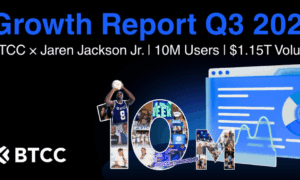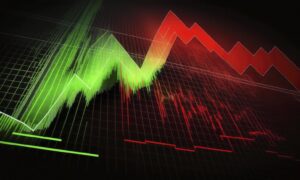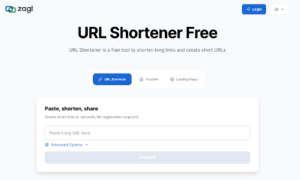Introduction
In today’s trading world, instant market analysis is no longer optional—it has become an essential tool for every investor and trader seeking smart and timely opportunities. Markets move in seconds, and trading decisions are built on real-time data that requires sharp and immediate interpretation.
Understanding the relationship between market capitalization and trading volume is a key step toward reading market behavior. When an asset’s value rises along with increasing volume, it often signals growing investor interest. Conversely, divergence between these two indicators may hint at upcoming volatility.
It’s also important for traders to understand that data alone is not enough—the real value lies in timely analysis. This is where intelligent tools and real-time analytics powered by AI come into play.
One of the most prominent platforms in this space is Trade Vector AI, an innovative and effective solution. The platform not only provides real-time market data but also delivers contextual analysis backed by machine learning algorithms, helping users make faster and more accurate decisions.
In this article, we’ll dive deeper into the concepts of market capitalization and trading volume, and how to use them through real-time analysis—with practical examples and advanced tools suitable for both beginners and professionals.
Keep reading to discover how you can leverage these insights to your advantage, and how smart trading platforms like Trade Vector AI can help you outperform the market.
What Is Market Capitalization?
Market capitalization is a financial metric used to determine the total value of a company or financial asset in the market. It’s calculated by multiplying the current asset price by the total number of circulating units.
For example, if a company has 1 million shares, and each share is worth $10, then the market cap is $10 million.
This concept is used not only in stocks but also in the world of cryptocurrencies. Crypto market cap is calculated in the same way: current price × circulating supply.
Types of Market Capitalization
- Small-cap: Usually below $300 million. These represent emerging projects or small companies—often volatile but with potential for rapid growth.
- Mid-cap: Between $300 million and $2 billion. More stable than small-cap projects, with a broader investor base.
- Large-cap: Above $2 billion. Includes major companies like Apple and Tesla or well-known cryptocurrencies like Bitcoin and Ethereum.
This classification helps investors assess the risk and stability associated with each financial asset. Large-cap assets are typically less volatile and easier to predict, while small-cap assets offer higher returns—but also higher risk.
Market Capitalization Categories Table
| Category | Range | Characteristics |
| Small | Less than $300M | Volatile, high-risk, fast growth potential |
| Mid | $300M – $2B | Balanced between growth and stability |
| Large | Over $2B | Stable, large investor base |
With real-time analysis, understanding market cap helps identify prevailing trends and determine whether buying pressure is genuine or short-term speculation.
Smart platforms like Trade Vector AI offer real-time insights into market cap levels, along with alert indicators that highlight optimal entry and exit points based on live market activity.
What Is Trading Volume and Why It Matters
Trading volume refers to the number of financial units bought or sold within a specific time frame. This could apply to stocks, cryptocurrencies, or even forex pairs.
Trading volume is one of the most important technical indicators used by traders to gauge the strength or weakness of price movement. When price rises with high volume, it’s considered a strong uptrend. But if price increases with low volume, it might be a false move.
Importance of Volume in Decision-Making
- Trend Confirmation: High volume confirms the validity of a price move—whether upward or downward.
- Reversal Warning: A gradual decline in volume during a continuing trend may signal a pending reversal.
- Market Activity Gauge: High-volume markets offer better liquidity and easier trade execution.
Example: If a small-cap crypto rises by 10% in an hour but on low volume, it could mean major investors are not participating. If the same increase happens on high volume, it shows solid support for the move.
Volume During Different Market Sessions
Volume varies significantly depending on time of day and market activity:
- During European & US sessions: Volume is usually higher, especially in forex and crypto markets.
- Off-peak hours: Volume is lower, increasing the risk of slippage.
That’s why trading during active sessions is preferred—signals based on volume tend to be more reliable.
Volume in Trading Strategies
Many entry/exit strategies rely heavily on monitoring volume shifts, for instance:
- Breakout confirmation: A resistance level break accompanied by high volume suggests a strong new trend.
- Correction insight: A low-volume dip often signals a brief pause, not a reversal.
Manual volume analysis can be tedious and error-prone. Platforms like Trade Vector AI offer automated tools that track volume and price movement in real time—giving traders instant clarity.
The key benefit is that the platform doesn’t just display numbers—it offers AI-powered alerts based on advanced analytics, helping you seize opportunities and avoid risks without manually decoding every chart.
The Relationship Between Market Cap and Volume
In financial markets, market cap and trading volume work together to give a fuller picture of an asset’s behavior. Relying on one without the other misses critical context—it’s their relationship that reveals whether price movement is healthy and sustainable.
When Does High Volume Reflect Real Value Growth?
If trading volume rises along with market cap, it typically indicates genuine demand and serious investor activity. This often happens following positive news or the breakout of a major resistance level.
In such cases, widespread participation boosts confidence in the trend.
Warning Signals to Watch For
Sometimes, we may see rising volume but declining market cap. This could signal intense selling or major investors exiting positions—an important red flag, especially if it repeats over several sessions.
Another scenario: market cap keeps rising while volume declines—this might reflect weakening bullish momentum and the possibility of a reversal.
Smart Money Patterns
Large investors use so-called Smart Money tactics to enter and exit the market discreetly. However, savvy analysts can trace their footprints by comparing market cap movements with volume shifts. Any discrepancy may point to hidden activity worth monitoring.
Fortunately, platforms like Trade Vector AI offer intelligent analysis tools that detect such patterns and issue alerts when volume and market cap diverge—giving users a competitive edge in decision-making.
Real-Time Analysis vs. Traditional Analysis
In today’s fast-paced trading environment, the difference between real-time and traditional analysis is increasingly evident. Successful traders rely on real-time data for rapid, informed decisions, while traditional methods may lag behind.
What Is Real-Time Analysis?
Real-time analysis is the process of monitoring and interpreting market data instantly using AI or advanced software. Technical indicators, economic data, and price gaps are updated by the second, allowing traders to act on the freshest insights.
Comparison Table: Traditional vs. Real-Time Analysis
| Feature | Traditional Analysis | Real-Time Analysis |
| Speed | Slow, based on outdated data | Instant, based on live data |
| Reliability | Useful in stable markets | Better for volatile markets |
| Tools | Manual indicators and charts | AI-powered smart systems |
Why Real-Time Analysis Is Essential Today
In markets like crypto or forex, prices can shift within seconds. Waiting for end-of-day data or delayed reports can cause missed opportunities or unexpected losses.
Trade Vector AI exemplifies modern solutions in this field. It combines AI intelligence with live data, offering an easy-to-use interface that displays real-time signals and contextual explanations—helping traders understand not just what’s happening, but why.
In short, real-time analysis offers a clear advantage for those seeking fast, tangible results—especially when paired with robust tools from automated trading platforms.
Tools for Analyzing Volume and Market Capitalization
To make informed trading decisions, it’s essential to understand the tools available for accurately analyzing trading volume and market capitalization. These tools go beyond basic charts and include technical indicators and smart algorithms that interpret data from multiple angles.
Popular Volume-Based Indicators
- OBV (On Balance Volume): Measures volume flow based on price direction. If the price closes higher than the previous day, the volume is added to OBV; if lower, it’s subtracted.
- MFI (Money Flow Index): Combines price and volume to indicate buying or selling pressure, commonly used to identify overbought or oversold zones.
- Chaikin Money Flow: Shows the inflow or outflow of capital by analyzing the close’s position within the daily range in relation to volume.
Analyzing Market Capitalization with Averages and Indicators
A moving average of market cap helps identify overall market trends. When the market cap rises above its average, it’s a sign of a stable upward trend. A drop below may indicate increased selling pressure.
Some traders combine indicators like RSI or MACD with market cap data for deeper insights into trend strength.
Manual vs. Smart Analysis Tools
| Tool Type | Description | Benefits |
| Manual Tools | Rely on individual chart and indicator reading | Suitable for experts, but slow and tiring |
| Smart Tools | Use AI to auto-analyze data | Fast, auto-alerts, contextual insights |
Trade Vector AI’s Role in Volume and Market Cap Analysis
Trade Vector AI simplifies the process by integrating all tools in a single interface. It provides:
- Live Monitoring: Real-time updates of volume and market cap changes.
- Contextual Analytics: Interprets relationships between indicators and gives clear signals.
- Smart Alerts: Notifies you when unusual volume or market cap changes occur.
Using these tools, traders can spot opportunities before they become obvious on standard charts—giving them a powerful edge in decision-making.
Real-World Scenarios of Instant Market Analysis
To appreciate the power of real-time analysis of market cap and volume, let’s explore practical examples that demonstrate how these tools can help you make smart decisions instantly.
Scenario 1: Sudden Volume Spike in a Small-Cap Crypto
Imagine a small cryptocurrency with low market cap suddenly sees its trading volume surge by 300% within a few hours. A trader may wonder: “Is this a buy signal?”
Real-time analysis is crucial here. If the surge is accompanied by price increase and no external news, it might indicate institutional money inflow. If the price remains flat or declines despite high volume, it could suggest smart investors are quietly exiting.
Scenario 2: Strong Market Correction
During major corrections, volume analysis is key to understanding whether the drop is routine or the start of a long-term reversal.
If the price falls but volume stays low, it shows weak selling pressure, possibly a buying opportunity. But if the decline comes with rising volume, it signals a broad exit and demands caution.
Scenario 3: Breaking News Events
When major news hits—like interest rate changes or a security breach—markets react fast. But not every move is meaningful. Real-time volume analysis helps you judge whether the market reaction is emotionally driven or fundamentally valid.
Here, Trade Vector AI plays a vital role. Through its tools, traders get instant notifications of volume and cap changes, with contextual analysis to decide whether to enter the market or wait.
These scenarios show how real-time analytics can be the difference between profit and loss—especially when supported by smart technologies like those offered by automated trading platforms.
How to Leverage Real-Time AI-Driven Analysis
AI is no longer a futuristic concept—it’s now a must-have for any trader who wants to stay at the heart of the market. With AI-powered real-time analysis, both beginners and pros gain a genuine competitive edge.
What Does AI Do in Market Analysis?
AI can analyze massive amounts of data in seconds and detect behavioral patterns that the human eye might miss, including:
- Comparing volume with immediate price movement.
- Detecting unusual changes in market cap.
- Spotting deviations from historical patterns and generating alerts.
Predicting Price Action with Machine Learning
Machine learning algorithms are used to identify recurring setups that precede market reversals or price surges. For example, the system can detect conditions similar to a past rally and suggest timely actions.
Benefits of Trade Vector AI as a Smart Analysis Platform
Trade Vector AI offers a suite of tools powered directly by AI, such as:
- Instant Alerts: Notify you immediately when significant volume or cap changes occur.
- Contextual Analysis: Explains what these shifts mean in the broader market picture.
- Smart Visualizations: Graphically illustrate the relationships between volume, price, and market cap in an intuitive way.
With these features, you don’t need to monitor the screen all day—the platform works on your behalf, keeping you updated on what really matters in the market.
As more traders continue using traditional tools, relying on AI through a platform like Trade Vector AI gives you a real advantage in making faster and smarter decisions.
Tips for Beginners on Volume and Market Cap Analysis
Starting in market analysis may seem overwhelming, but with the right guidance and tools, any beginner can build skills with confidence. Here are some simple yet powerful tips for analyzing volume and market cap:
1. Avoid Low-Liquidity Assets at First
Some low-priced assets may look attractive but often suffer from low trading volume, making them hard to buy or sell and prone to high slippage. Start with well-known assets that have mid or large market caps.
2. Always Combine Volume with Price
Volume alone is not enough—always compare it with price movement. For example:
- Rising price + high volume = strong bullish trend.
- Falling price + low volume = temporary correction, not a true downtrend.
This combination gives you a clearer market picture and avoids making decisions based on a single indicator.
3. Watch for Volume Explosions
Sudden spikes in volume usually mean a major event or price move is coming. Don’t rush in—wait for confirmation through price movement or relevant news.
4. Use Educational and Analytical Platforms
Instead of analyzing everything manually, rely on tools that help you learn and make decisions. Trade Vector AI is beginner-friendly, thanks to its intuitive interface, smart alerts, simple explanations, and interactive indicators.
Start with small steps, focus on gradual understanding, and over time, you’ll be able to read the market confidently and make decisions based on logic—not emotion.
Conclusion
In the modern trading world, real-time analysis is an indispensable tool for anyone seeking fast and effective results. Understanding the relationship between market capitalization and trading volume not only gives you deeper insight into market moves, but also helps you anticipate trends before they form.
Relying on traditional analysis alone is no longer enough. Markets move quickly, and competition is fiercer than ever. That’s why advanced tools like Trade Vector AI give you a real edge, through instant analytics, smart alerts, and an intuitive visual interface.
Combining artificial intelligence with a solid grasp of volume and market cap empowers you to make better investment decisions. Whether you’re a beginner or a seasoned trader, remember: smart tools don’t replace you—they empower you to stay one step ahead.
Start now, and see how real-time analysis can make a real difference in your daily trading results. Seize every opportunity—at the right moment—with Trade Vector AI.



































